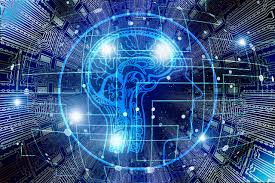(based on the very useful “Artificial Intelligence for Dummies” 3rd edition, 2025, John Wiley & Sons. Inc)

AI, aka “Artificial Intelligence, is a loose expression, used optimistically – and increasingly hyperbolically – and, although already of huge importance, but has unfortunately been overvalued and possibly oversold.
It has also been around for much longer than most people think and the way AI is actually programmed and how it processes data can be roughly split into four separate categories.
A. Reactive AI, sometimes referred to as “weak AI”
These are programs which simply react to situations, without memory and without experience. They formed the basis of early game playing machines. They take an isolated decision every time that is required – then they just repeat the same thing ab initio again and again.
B. Limited Memory AI, sometimes referred to as “strong AI”.
A small amount of memory is filled with data that is preloaded as experiential knowledge, then extended and supplemented by updates as appropriate. Even a small amount of memory provides very significant speeding up of decision taking and this makes this strategy useful with “assisted-driving” cars and industrial robots – the current level of industrial “strong AI”.
C. “Theory of Mind” Machines.
Here the machine is able to assess both its own required goals and the potential goals of other entities (humans or machines). It can learn from its own self-generated experience and use this to refine its own responses to operate more efficiently (in terms of its given objectives) and faster. This is currently a feasible implementation but not commercially viable. It would enable a truly self-driving car i.e. one which would have some sort of probabilistic assessment of what other cars/objects might do. The computing load would restrict speeds in busy environments. However this approach does enable robot soccer – mainly because this is a limited and controlled environment, enabling quicker decision-making and reaction times.
This is establishing itself very rapidly at the moment (Autumn 2025)
D. Self Aware Machines.
These are strictly confined to science-fiction and/or films at the moment. Such machines would have to be conscious and have a sense of self as well as a theory of mind in responding to similar actors or machines with a sufficiently successful ability to infer their intentions.
Such machines are:
(a) not remotely possible at the moment
(b) possibly never going to be practical
(c) subjects of fear and anxiety
(d) potentially and probably very dangerous.